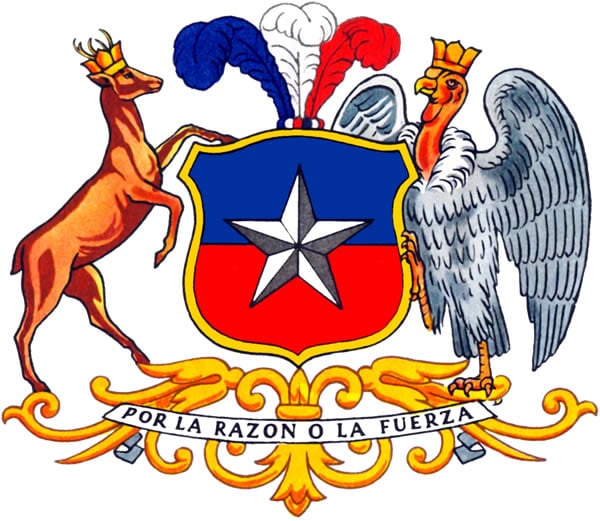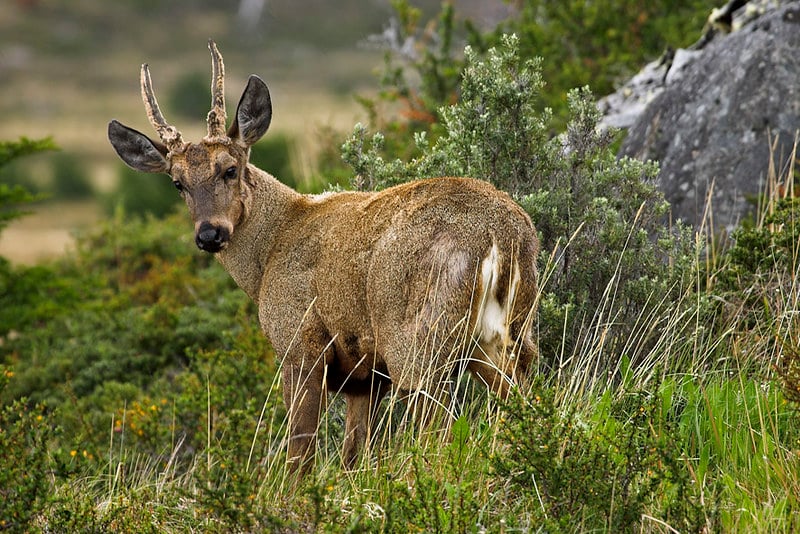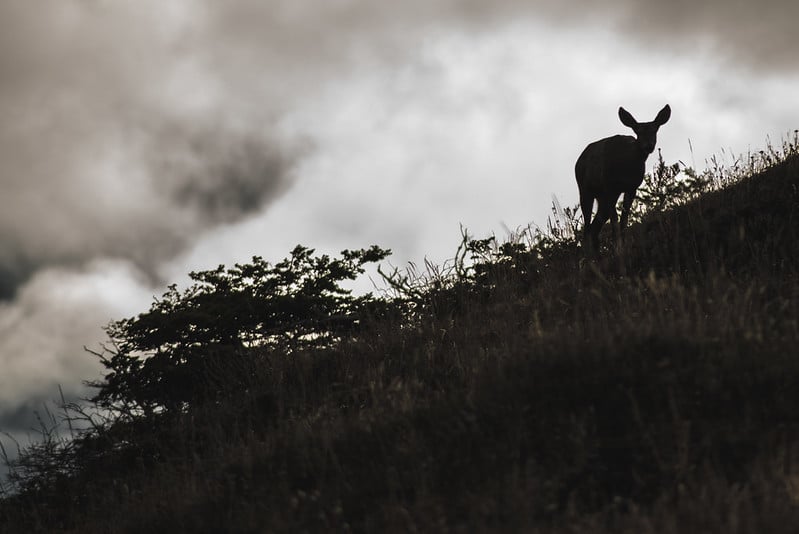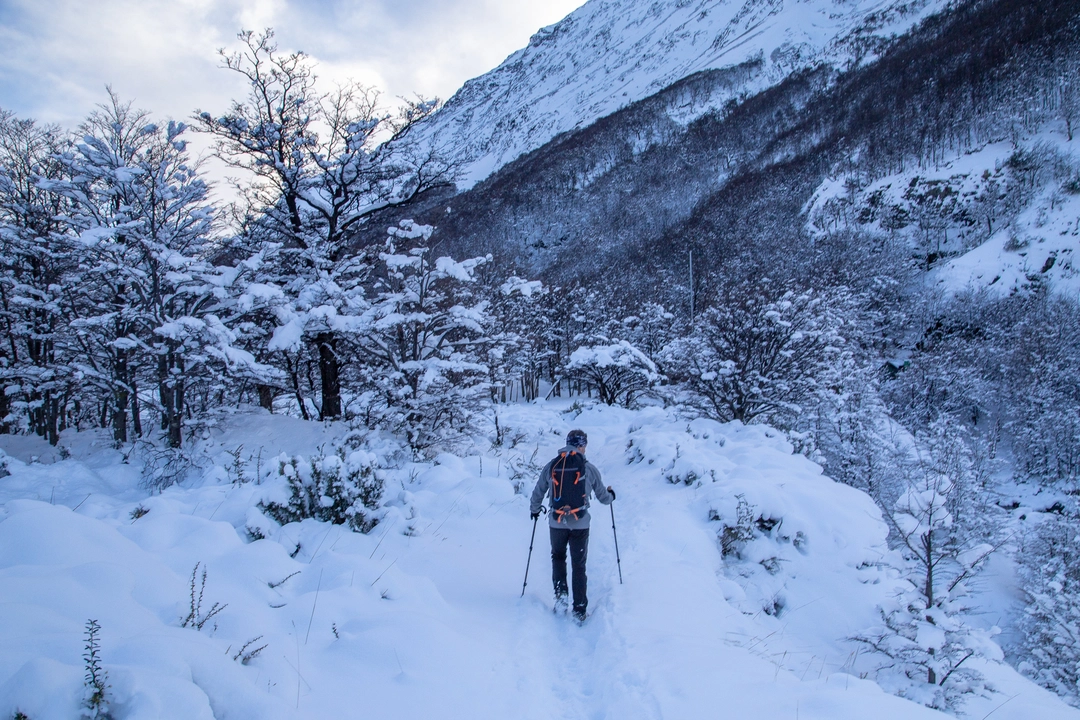The huemul deer (Hippocamelus bisulcus), also known as the South Andean deer, is the iconic animal of Chile. A huemul even appears alongside the condor in the country’s coat of arms, and they were named a natural national monument in 2006. Bashful and unassuming, spotting a huemul during a wildlife safari in Torres del Paine National Park is a real, once-in-a-blue-moon treat for any visitor, photographer or zoologist. And yet, as is the fate which has befallen so many of Patagonia’s native four-legged residents, the huemul is now tragically in danger of extinction.

The huemel represents 'razón' (reason) and the condor 'fuerza' (force) in the Chilean coat of arms
Once a common inhabitant of both the Chilean and Argentinian sides of the Andean mountain range, huemul territory used to stretch from Santiago right down to the Straits of Magellan, but it is now rapidly shrinking. There are an estimated 2,000 left in the wild, with roughly 1,500 in Chile, and 500 or so wandering the mountains of Argentina.
Declared officially endangered by the IUCN Red List of Threatened Species, our short-legged and stocky friend is generally a coffee colour. Its coat is thick, dense, and ever so slightly oily to enable the huemul to swim with ease through the chilly glacial lakes and lagoons of Patagonia and dry off quickly afterwards. The hair fibres of the coat are also hollow, providing the huemul with some much needed insulation when going for an icy dip. The huemul is the largest deer native to Chile and, at one metre high, it towers over other Chilean cervines such as the taruca and the pudú.
The majestic antlers of the male change every year and are their main weapon of seduction when it comes to finding a mate. The huemul also has ears up to twenty-five centimetres long, enabling them to listen out carefully for potential puma predators.

Known for their shyness and docility, one of the main reasons the huemul is so notoriously difficult to spot is its penchant for solitude - they usually live either completely alone or in groups of no more than two or three. In the past, the huemul was often erroneously depicted as a horse in reproductions of the Chilean coat of arms. At the time, the only available information about the elusive huemul were vague, unclear reports from unimaginative explorers, who could only describe the huemul as smaller than a horse...
Today, huemules are imperilled for many reasons, including illegal hunting, attacks from domestic dogs, pumas and foxes, and the onset of diseases transmitted by livestock. Mining and energy development projects planned in Patagonia also threaten to flood the huemul homeland. The introduction of non-native deer species, such as the red deer, and the practice of farmers allowing their cattle to roam the natural habitat of the huemul, and graze greedily on their favourite vegetation, has also contributed to their decline.
In 2010, the 'Plan Nacional de Conservación del Huemul' was launched by the Chilean government in order to study and analyse the reasons huemul populations are plummeting, and to attempt to introduce more huemules into the wild to boost numbers and regional biodiversity. In 2005, the Huilo Huilo Organisation in Valdivia launched a breeding scheme to tackle the issue and, by the end of the year, the organisers were thrilled to have heard the pitter-patter of tiny hooves for the first time.
Ever since, the organisation has been continuing with its program of semi-controlled reproduction. The next step is to introduce the little ones slowly into the wild, following their progress closely for at least the following two years so as to ensure they are adapting well to their natural habitat. Radio transmission collars will enable conservationists to keep an eye on the latest arrivals in the Patagonian wilderness, and fingers are crossed that this initiative will mark a change for the better in the plight of the huemul.

In 2010. the Chilean and Argentinian governments signed the South Andean Huemul Memorandum of Understanding, pledging to work together to improve the status of the huemul in the wild. The 2015 opening of Parque Patagonia, a new national park comprising 200,000 acres of land in the Chacabuco Valley, is also a promising step towards protecting the region’s threatened biodiversity, including the endangered huemul.
The future is certainly looking brighter for the huemul, and conservationists hope these placid animals are being drawn back from the brink of extinction. You can see the gentle and gambolling huemules in their beautiful native Chilean Patagonia in this video.
As Cristián Saucedo from the Fundación Parque Patagonia points out during the short film, if the huemules have disappeared from a place, then something bad has surely happened there. If Chile’s national animal has been driven from its natural home and is in danger of extinction, this is surely a sign that things are not right. The time has come to safeguard the precious animals of Patagonia, if only to make sure that Chile does not have to find a new national animal to display proudly in its coat of arms!
Spot a huemuel for yourself on a Patagonian adventure! Get in touch at reservations@cascada.travel.

_miniatura.webp)
_resultado_miniatura.webp)












